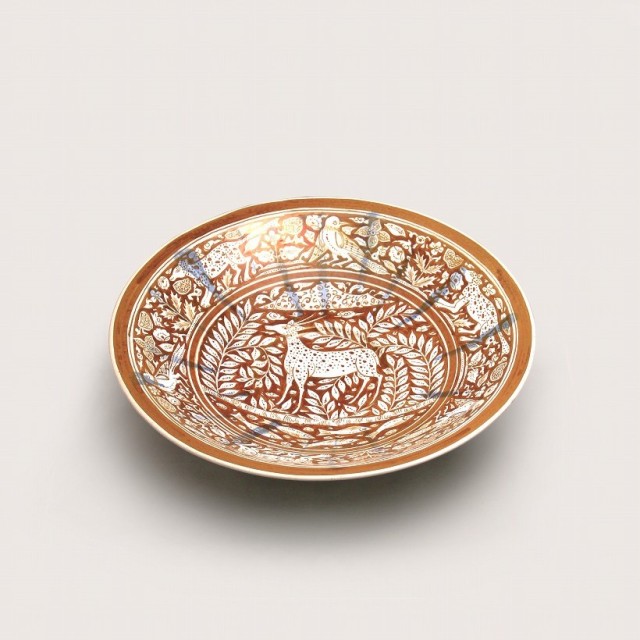
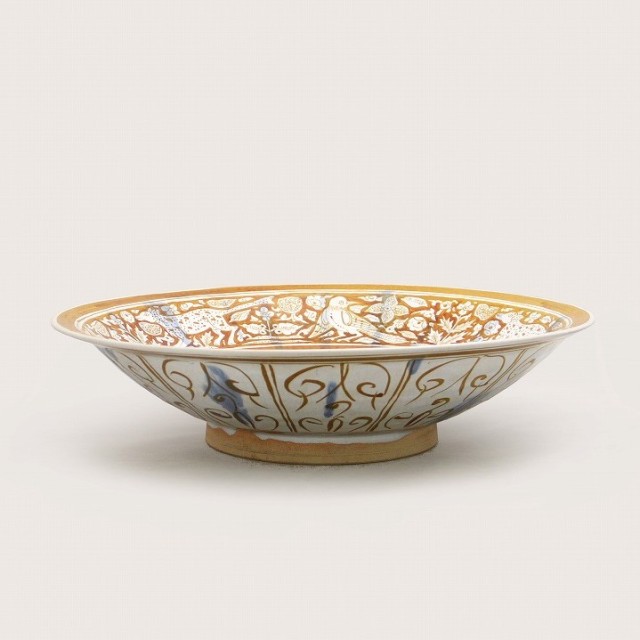
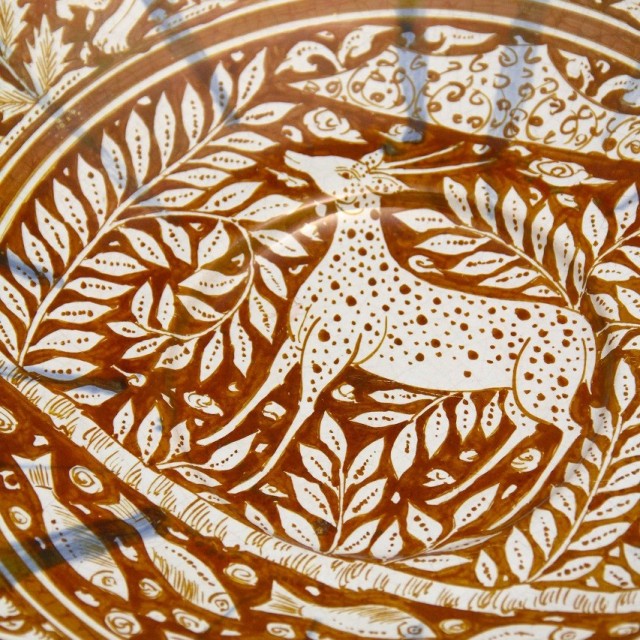
▲The piece features a charming spotted deer at its center.
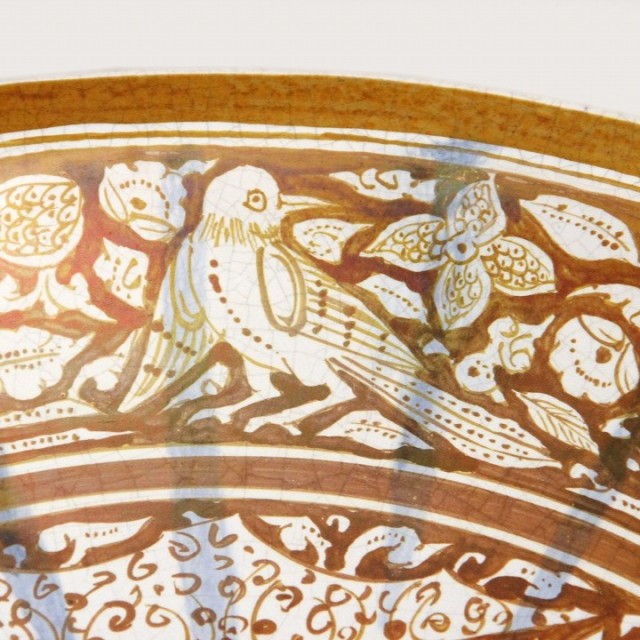
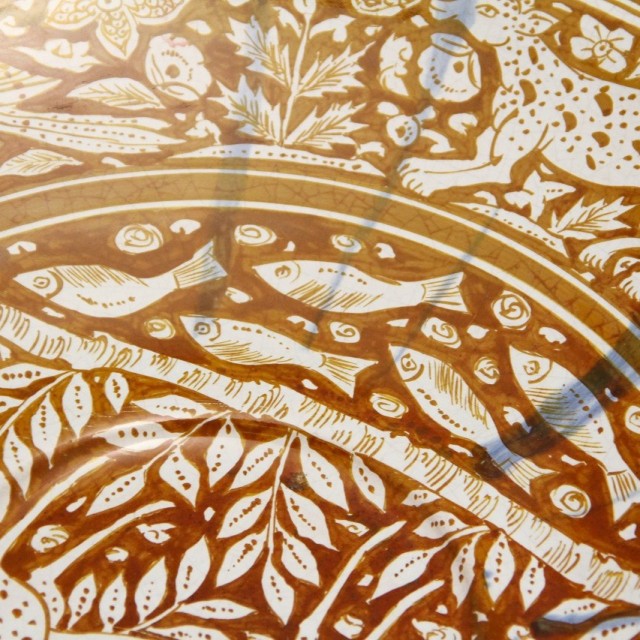
▲The surrounding area is intricately adorned with natural motifs such as birds, fish, and flowers. When bathed in light, it subtly shifts hues depending on the viewing angle, emitting a serene radiance.
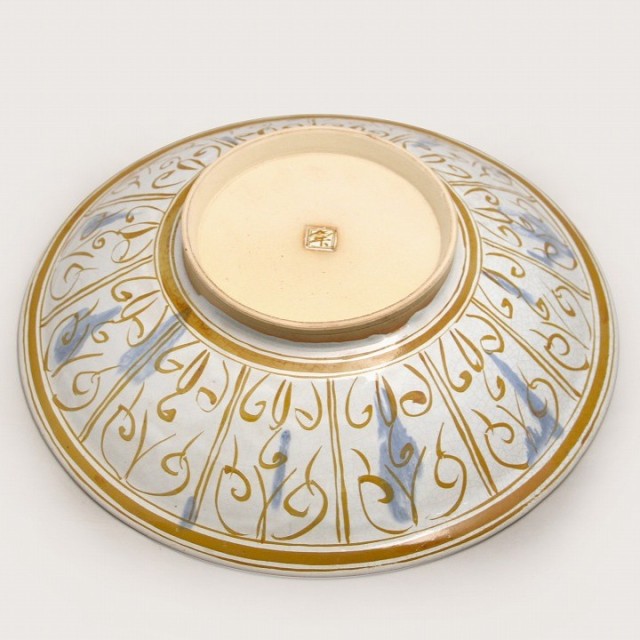
▲The underside of the plate features an abstract arabesque pattern, creating harmony with the design on the top surface.
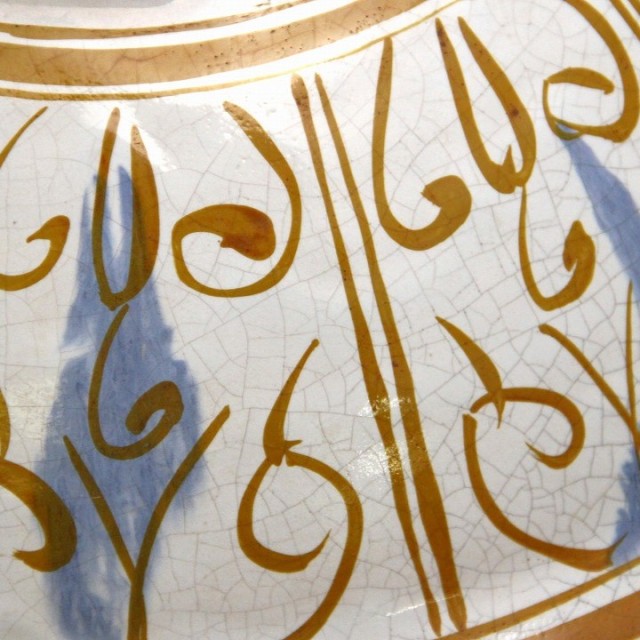
▲A close-up of the abstract gold karakusa (arabesque) patterns and the crazing on the reverse side of Takuo Kato's lusterware plate. The reflection of light highlights the delicate shimmer characteristic of lusterware.
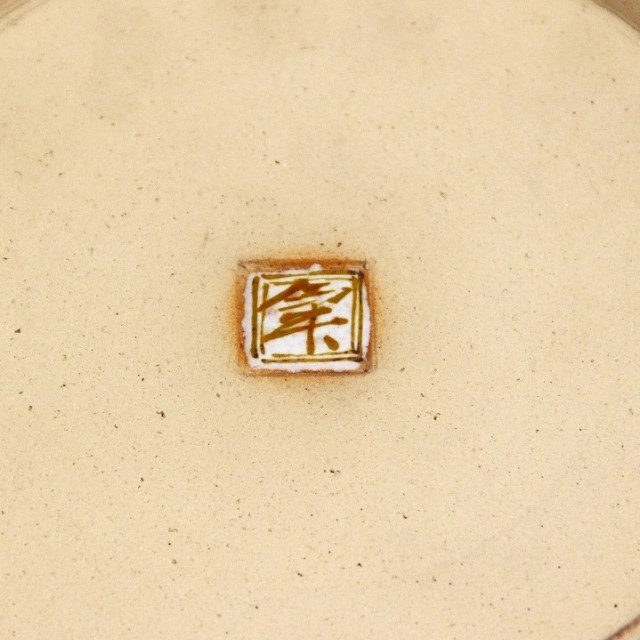
▲There is an inscription "Taku" on the base.
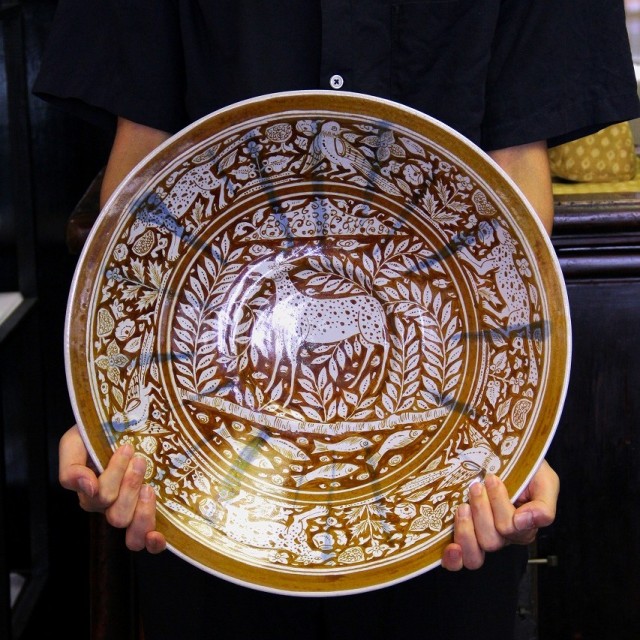
▲It's a truly impressive size, requiring both hands to hold.
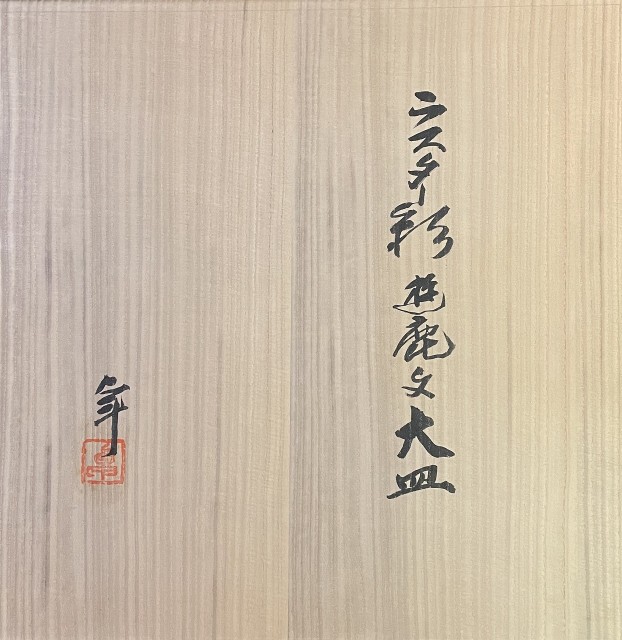
▲The lid of the box bears the inscription “Large dish, luster with deer design,” along with the signature and seal of Takao Kato.
with a signed box
Showa - Heisei
Living National Treasure
D40cm H9.5cm
Lusterware is a technique that originated in Mesopotamia in the 9th century and declined after the 14th century, leading it to be called the lost pottery of Persia. Its characteristic feature is its metallic sheen. Kato Takuo was captivated by this lusterware and dedicated himself to its revival. He risked the remainder of his life on trial and error, ultimately succeeding in its restoration.
A deer is depicted in the center, surrounded by animals such as birds and fish.
Similar piece is published in the catalog "The Splendor of Ceramic Art: The World of Kato Takuo."
Takuo KATO
1917 - 2005
Takuo was a leading figure in the restoration of Persian lusterware ceramics that had disappeared around the 16th to 17th centuries and also in the restoration of three-color glaze ceramics, the oldest Japanese pottery technique, developed in the Nara Period (710-794). Born into a family of pottery masters dating back to the late Edo Period (1603-1867), Takuo began studying ceramic art at a very young age under his father, Kato Kobe, the fifth heir of the grand pottery master of Mino ware. Takuo distinguished himself as a leading expert in ancient pottery restoration techniques by successfully restoring Persian lusterware in the early 1980s after some 20 years of studies. His achievements brought him numerous art awards. He was named a Living National Treasure in 1995.
Contact about the Item